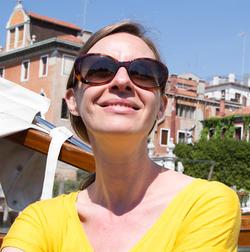The New Social Environment#153
Peter Saul with Jason Rosenfeld and Amanda Gluibizzi
1 p.m. Eastern / 10 a.m. Pacific
This event is produced by The Brooklyn Rail. Learn how you can donate ✨🌈
Painter Peter Saul will be in conversation with Rail Editor-at-Large Jason Rosenfeld and Rail Artseen Editor Amanda Gluibizzi. We’ll conclude with a poetry reading from Louis Bury.
In this talk
Peter Saul

Peter Saul is considered by many to be one of the most singular artists of his generation, whose paintings have continued to challenge audiences over the course of a career spanning more than six decades. Born in San Francisco, California in 1934, he briefly attended Stanford University and the California School of Fine Arts before going on to receive his BFA from Washington University, St Louis in 1956. After graduating, Saul moved to Europe where he lived first in Amsterdam, later in Paris and Rome. The relative isolation that his moved afforded him in part lead Saul to derive inspiration from popular culture, particularly American magazines and comic books. His drawings from that time in particular are a hybrid of abstract expressionistic marks and cartoon-inspired imagery. His bold and brushy paintings juxtaposed the loosest of domestic settings - bedrooms, bathrooms, kitchens - with what he referred to at the time as “folklore, contemporary version, which seems to be mainly the commercial and the smutty.” While living in Paris, Saul’s work drew the attention of Chicago dealer Allan Frumkin, who gave him his first solo exhibition in 1961. The critical acclaim was almost immediate, with Saul quickly added to the growing list of artists making what was soon dubbed ‘Pop Art.’
Following his return to the United States in 1964, he settled in the San Francisco suburb of Mill Valley. While he continued to use tropes such as Superman and Donald Duck, toilets, knives, guns and food items as compositional and satirical elements, the context of California in the 1960s, the Cold War, Vietnam and Civil Rights protests, was transformative. Never one to shy away from difficult subjects, Saul addressed the most divisive issues of the time with characteristic bluntness, none more so than the Vietnam War. He commented in 1967, “now I think I have… paintings that could prohibit a sophisticated response. Not just because of ‘obscenity,’ which is prevalent, but because it is coupled with politics. I am polarizing things, want to see good and bad.” Those paintings, equally critical of all parties involved, feature over-sexed G.I.s and female caricatures of Asian ‘types’ as un-subtle representations of the atrocities of war. Besides the rampant “obscenity,” Saul’s adoption of acrylic paints and the day-glo palette they offered is a send-up not just of perceived ‘good taste’ but also the moral corruption he was satirizing.
If any single theme defines Saul’s work as a whole, it is his willingness or more accurately, his eagerness to shock audiences. The gleeful irreverence in his treatment of ‘serious’ subject matter is the mark of an artist well aware of the power of humor. Through the 1970s and beyond, Saul continued to turn a critical eye on institutions such as the art world, government, big business, the feminist movement and public figures ranging from presidents to serial killers. In 1975, he left California for upstate New York. The move coincided with the development of a major new series of paintings on a grand scale, revisiting classics of art history including Rembrandt’s The Night Watch, Picasso’s Guernica and Leutze’s George Washington Crossing the Delaware. True to the genre, Saul’s version of ‘history’ painting is both parody of the past and commentary on present. In 1981, Saul was offered a teaching position at the University of Texas, Austin, where he lived and worked until returning to New York in 2001. While he continued to engage with the various subjects of his earlier work, beginning in the late 1980s a number of self-portraits signaled a more introspective approach in his painting. Though hardly a departure from his established style - described by one critic as “Thomas Hart Benton meets R Crumb” - Saul himself often appears as the comic-tragic subject of his more recent paintings.
Jason Rosenfeld

Amanda Gluibizzi

The Rail has a tradition of ending our conversations with a poetry reading, and we’re fortunate to have Louis Bury reading.
Louis Bury

❤️ 🌈 We'd like to thank the The Terra Foundation for American Art for making these daily conversations possible, and for their support of our growing archive.